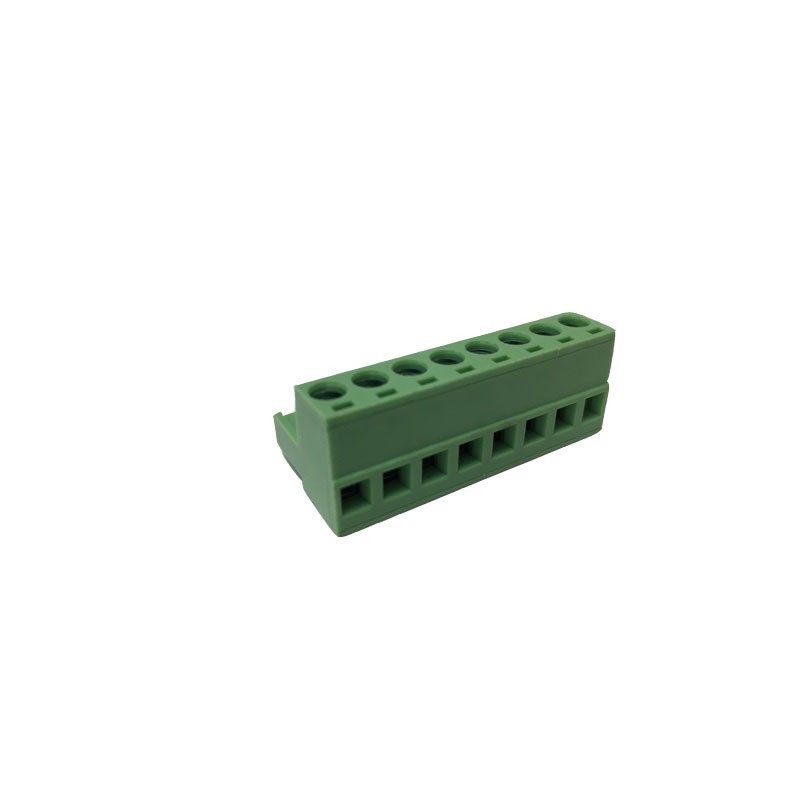What Are PCB Terminal Blocks?

A printed circuit board (PCB) terminal block is a connector that is attached to a printed circuit board. This small component is used to provide a connection between different components on the PCB board. It is essential to connect wires, cables, and other electrical components easily and quickly without needing to solder them directly to the board.
PCB terminal blocks are designed to be easy to install and remove, making them an efficient and cost-effective solution for creating secure and reliable connections. They are made from high-quality materials, such as brass, copper, and plastic, and can be found in different shapes and sizes.
Types of PCB Terminal Blocks
PCB terminal blocks are classified into different types based on their design, size, and function. The most common types of PCB terminal blocks include pluggable, screw-type, spring-loaded, barrier strip, and miniature blocks.
Screw-Type Terminal Blocks
Screw-type terminal blocks are the oldest and most common type of PCB terminal blocks. They have been around for decades and are still widely used today. These terminal blocks are designed with a screw that tightens a metal wire to create a reliable, permanent connection.
Spring-Loaded Terminal Blocks
Spring-loaded terminal blocks are designed to create a more secure connection than screw-type blocks. They are spring-loaded, which means that they use a spring mechanism to clamp wires in place. These terminal blocks provide a more secure connection that ensures that the wires stay in place, even when subjected to vibrations, impacts, and other external forces.
Pluggable Terminal Blocks
Pluggable terminal blocks are designed to make maintenance and repairs easy. These blocks are designed with removable connectors that can be easily unplugged and plugged back in without any special tools. This makes it easy to remove and replace faulty components to keep the device running smoothly.
Barrier Strip Terminal Blocks
Barrier strip terminal blocks are designed to keep wires organized and secure. They are designed with a removable barrier that separates the wires into individual terminals. This design allows each wire to be securely connected, and each terminal can be labeled, making it easy to organize the wires.
Miniature Terminal Blocks
Miniature terminal blocks are designed for space-saving applications. These blocks are small and compact, making them ideal for use in applications where space is limited. They are often used in small electronic devices or in cramped workspaces where larger blocks are not suitable.
Applications of PCB Terminal Blocks
PCB terminal blocks are used in a wide range of applications, including industrial automation, robotics, HVAC systems, automotive electronics, and telecommunications. These terminal blocks are used to secure and organize wires and cables, provide a stable connection, and minimize maintenance and repair costs.
Choosing the Right PCB Terminal Block
When choosing the right PCB terminal block, there are several factors to consider, including type, size, voltage, and current. Terminal blocks are available in different sizes and configurations, so it is important to choose the right one for your application.
The voltage and current rating are also essential considerations when choosing a terminal block. Each block is rated to handle a specific voltage and current and using one that is not rated appropriately may result in damage to the device or even cause injury.
Conclusion
In summary, PCB board terminal blocks are essential components in many electronic devices. They provide a secure and reliable connection between different components on the printed circuit board. They are available in various types, and the right one for your application depends on factors such as type, size, voltage, and current. Always choose a terminal block that is rated for the correct voltage and current to prevent damage to your device, injury, or even fatalities.